Charles E W Bean, Diaries, AWM38 3DRL 606/249/1 - 1917 - 1932 - Part 20


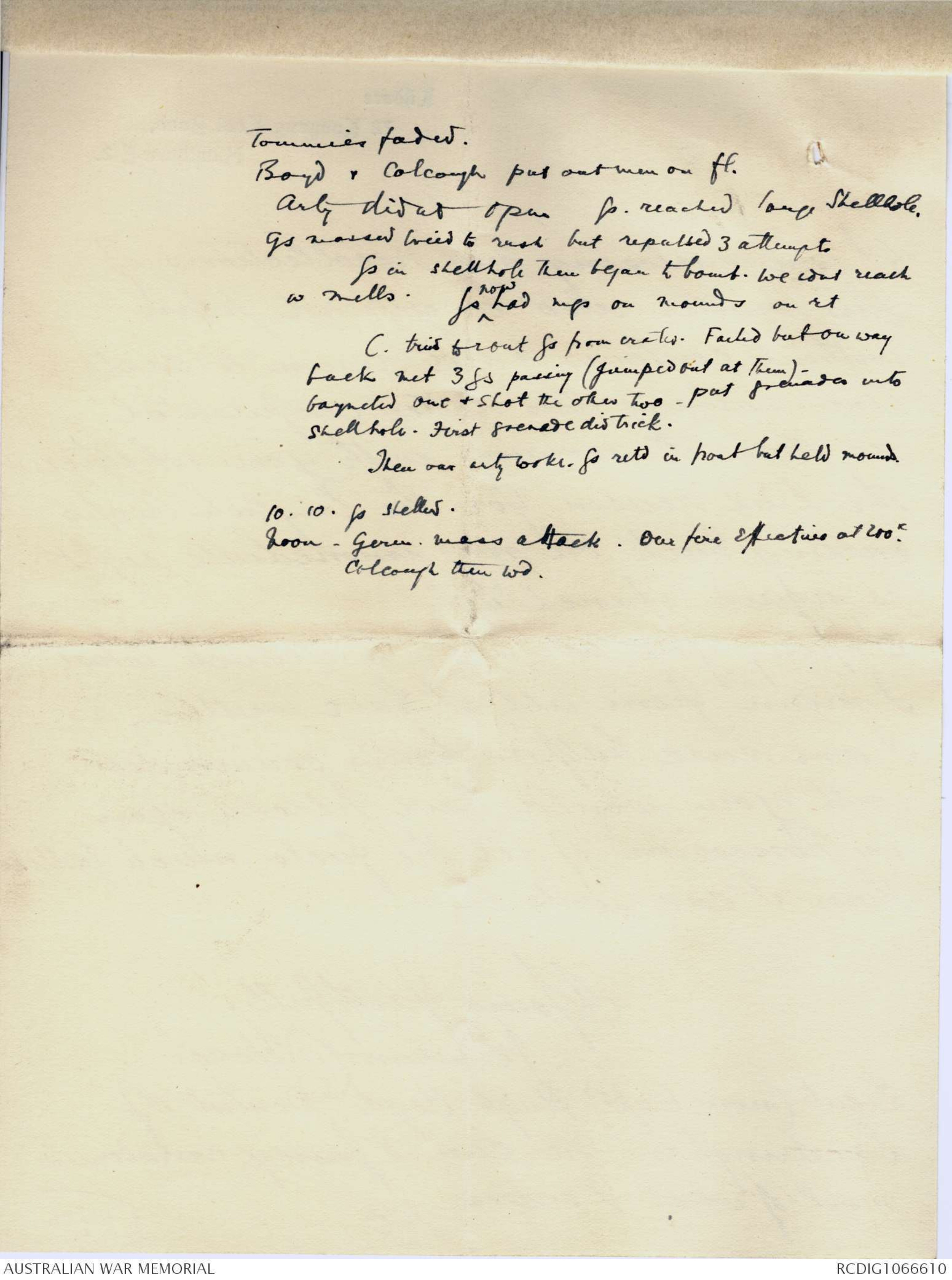
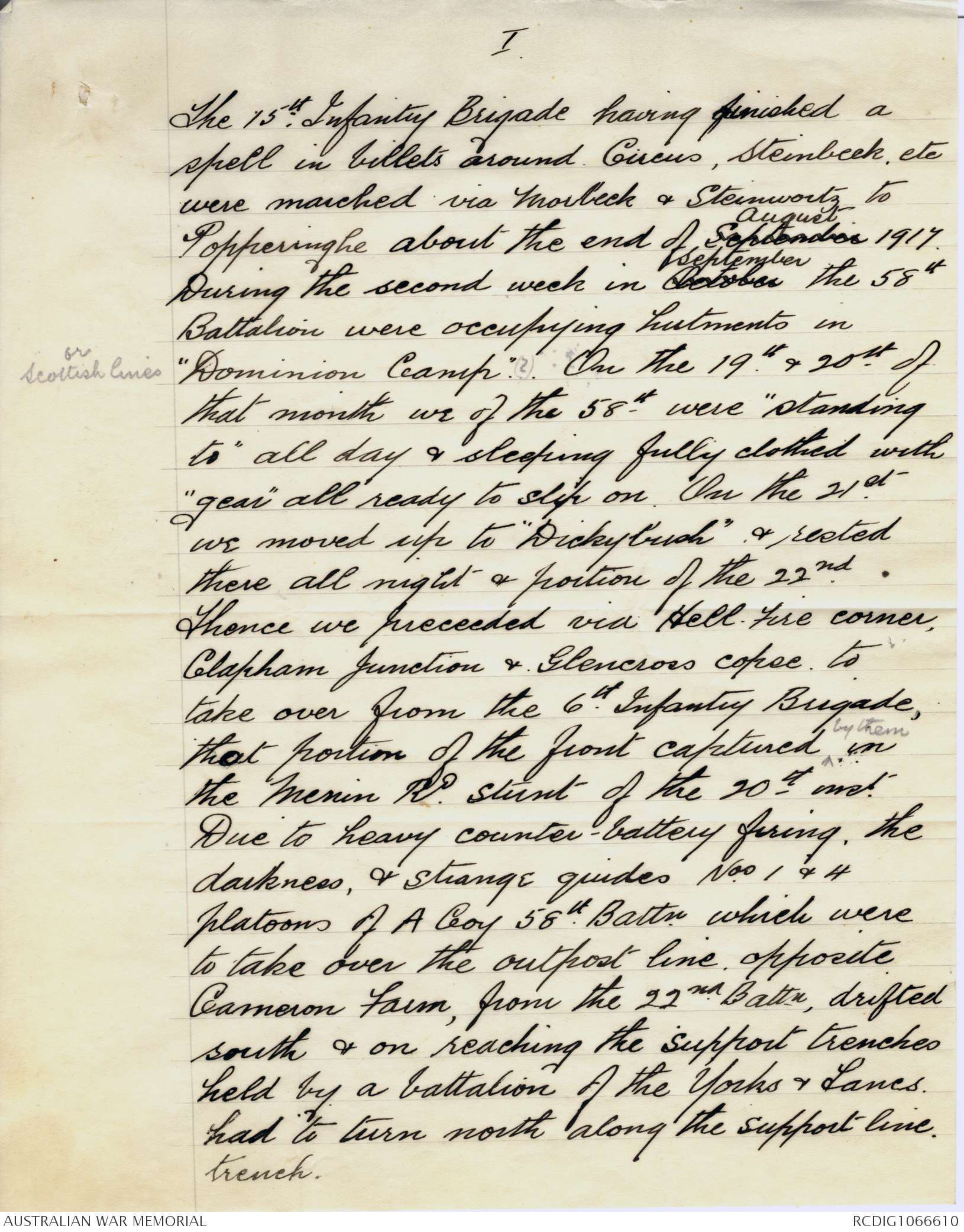

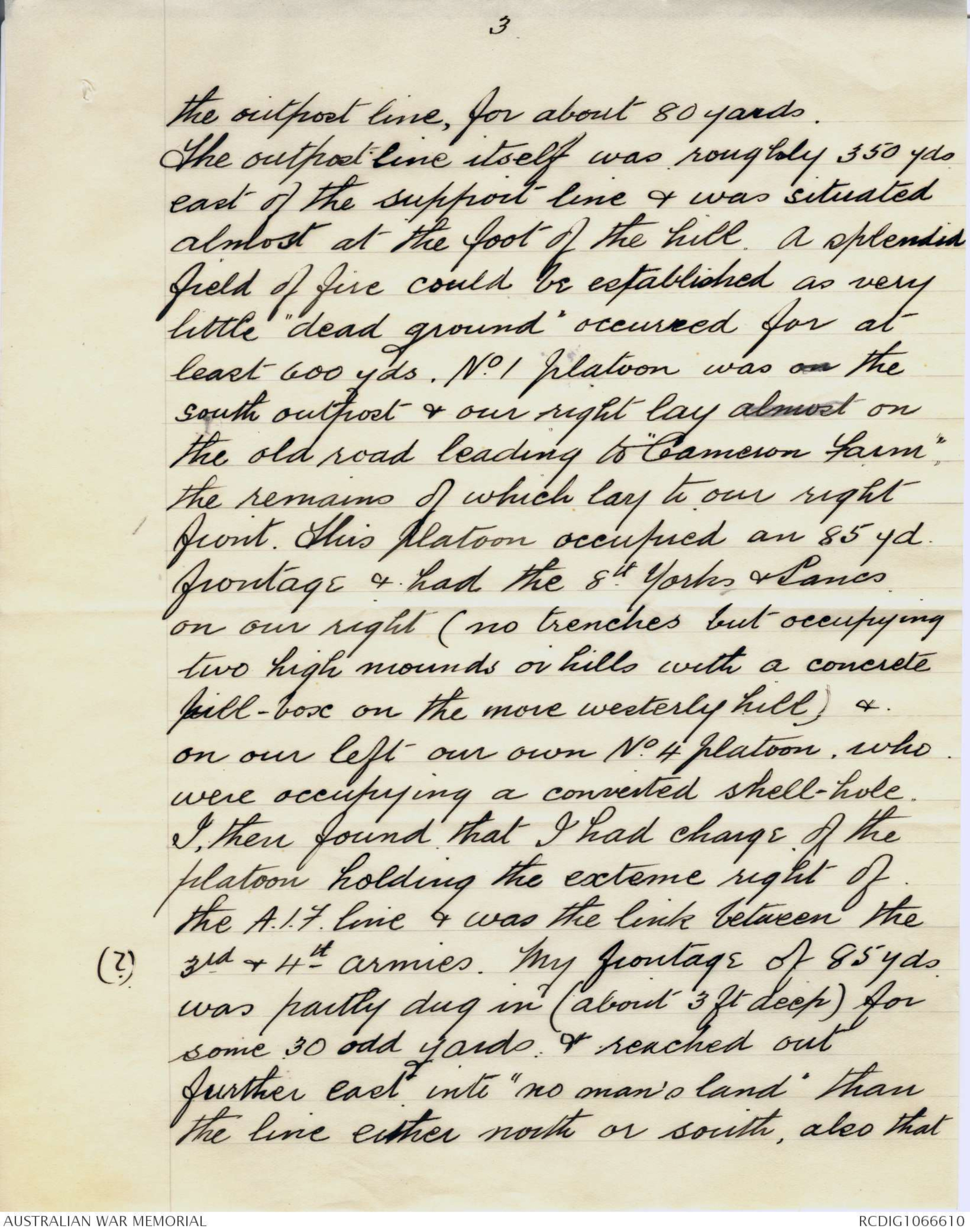
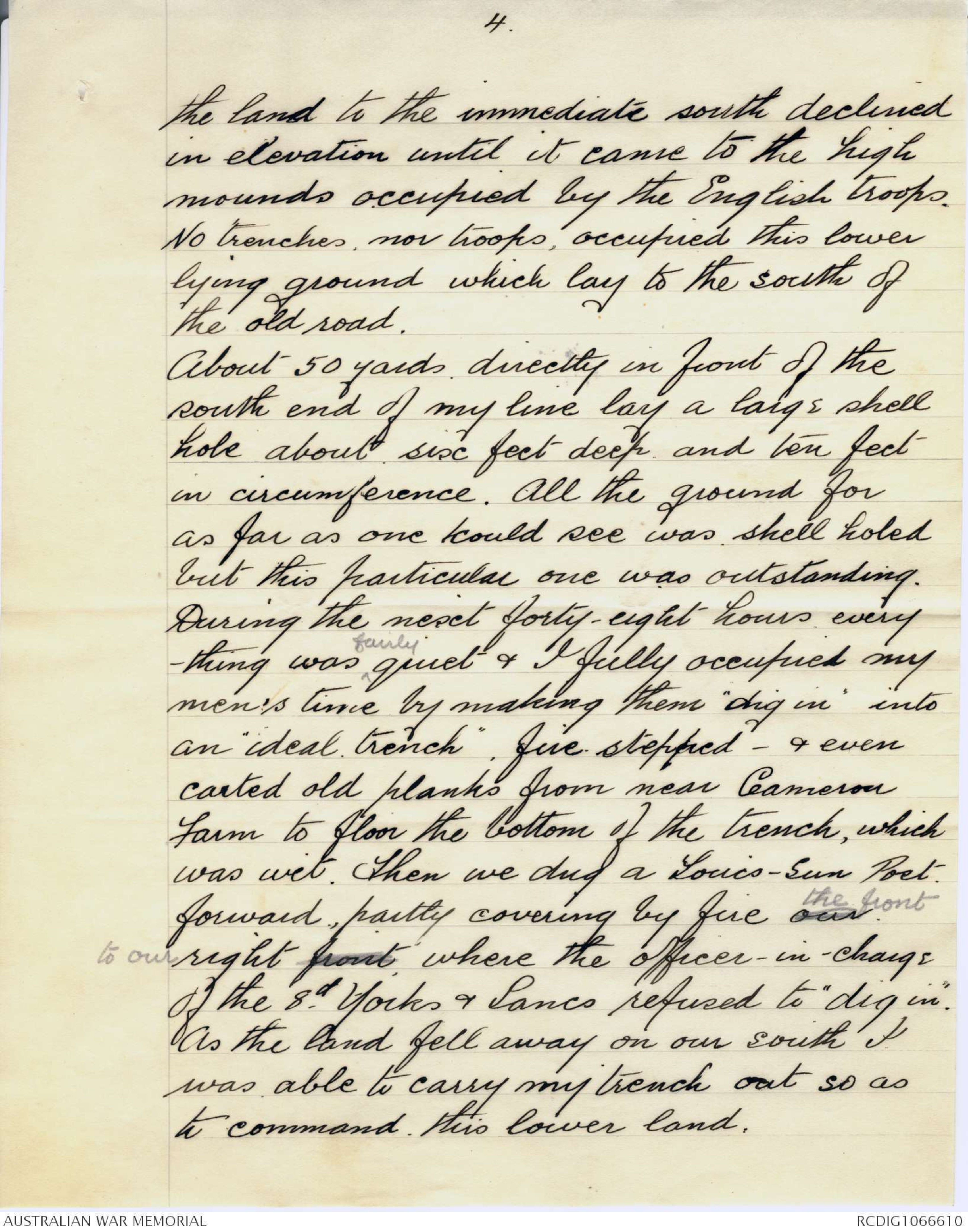
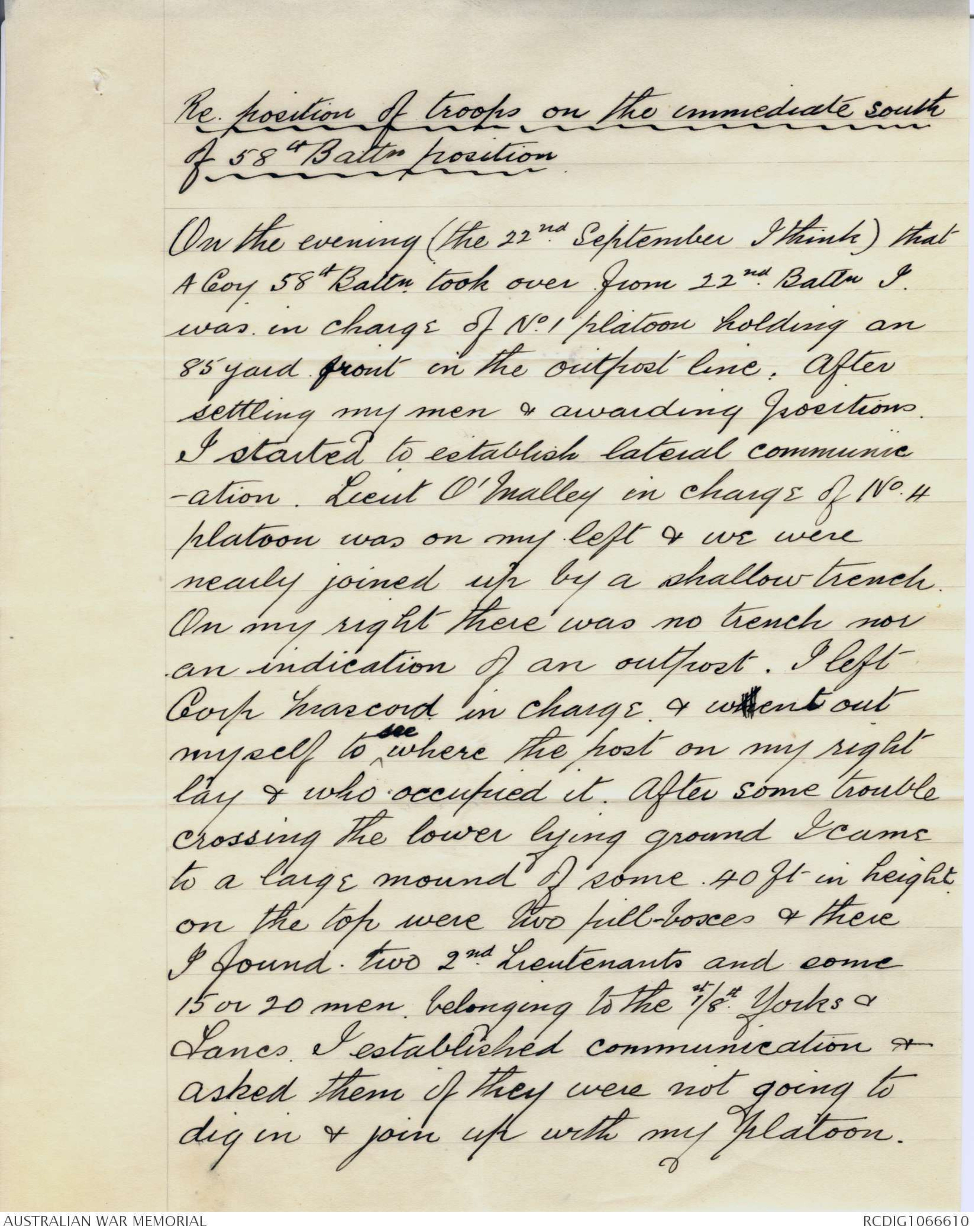
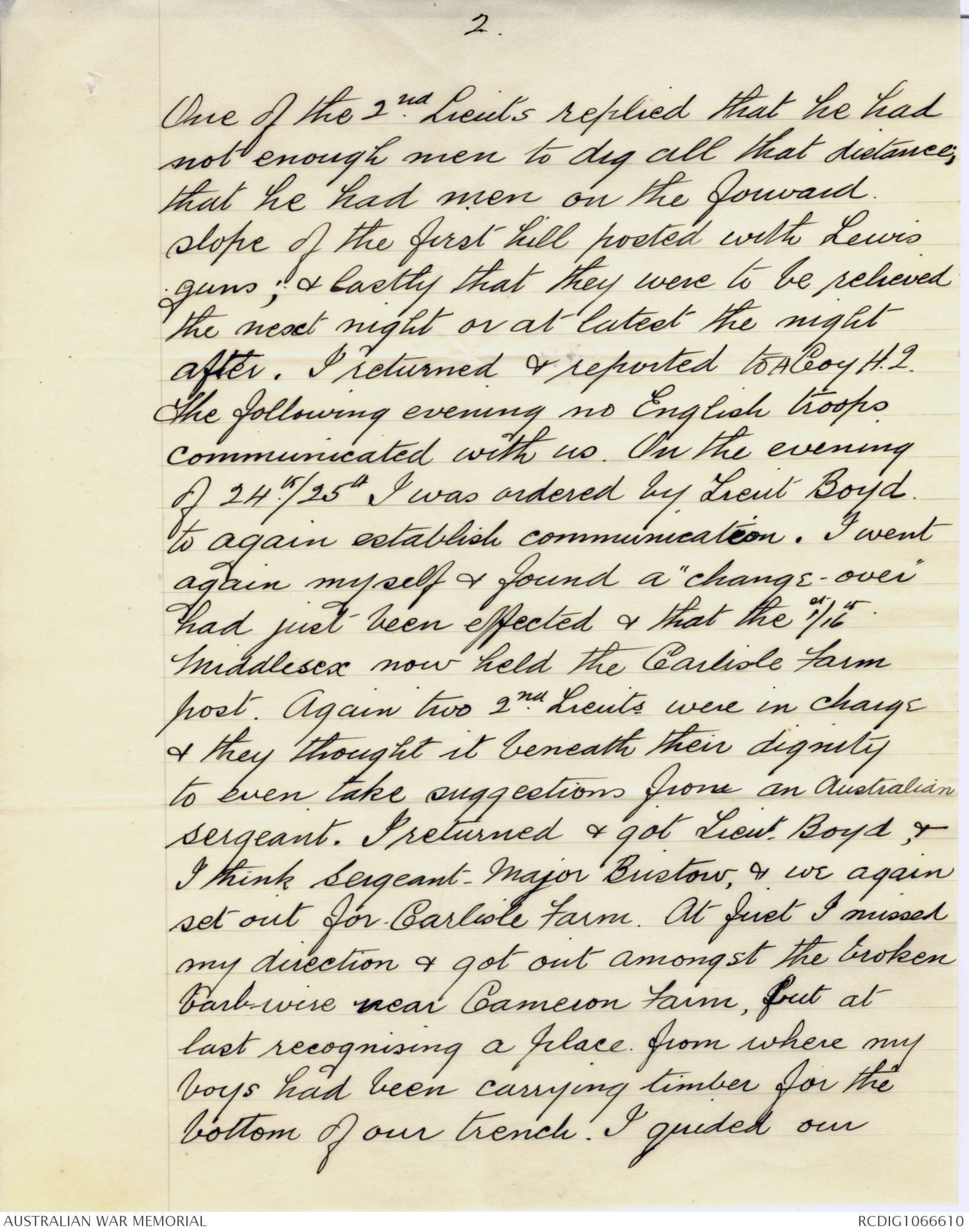
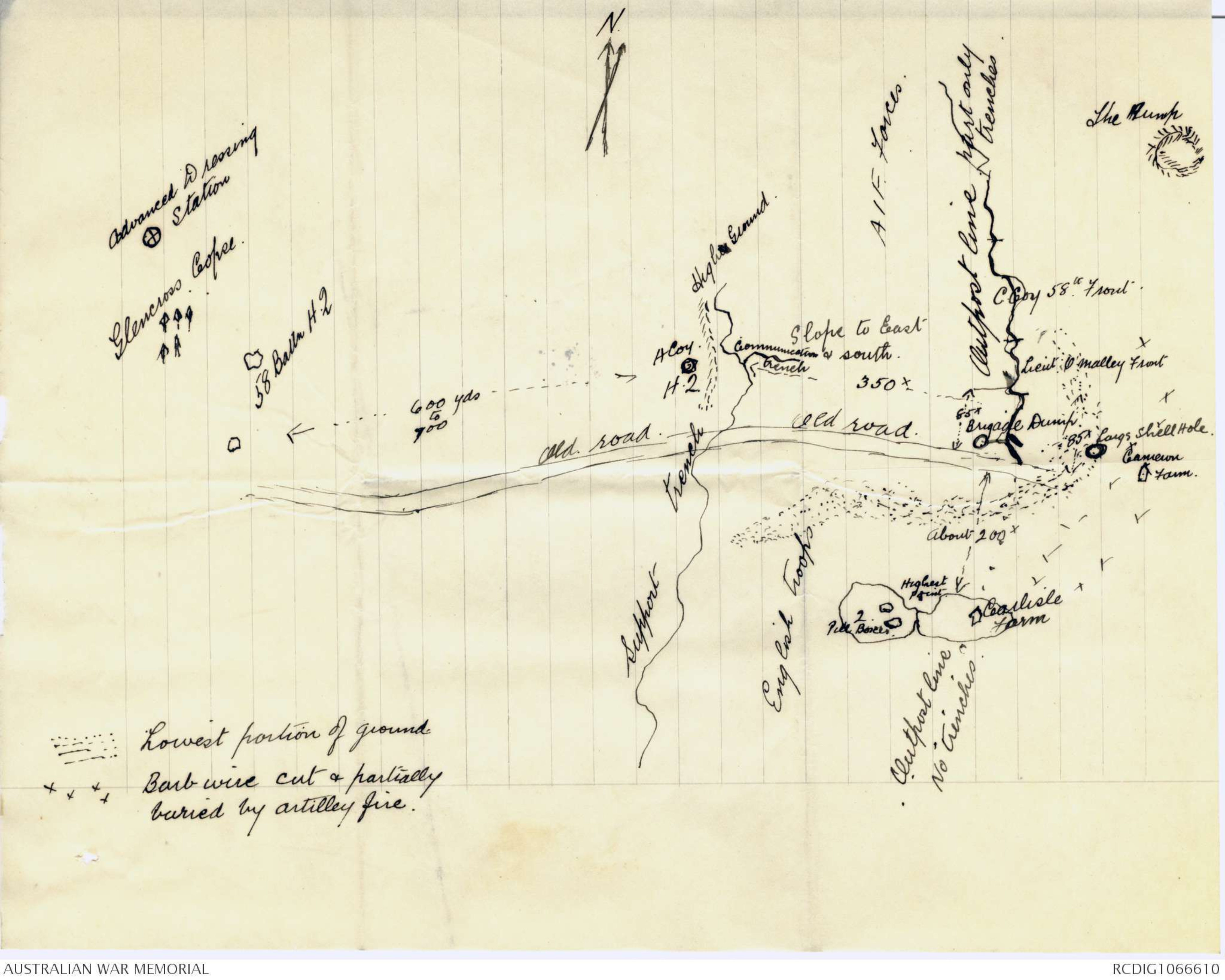
Acknowledged
26/5/32
[[?]]
Kildare
72 Kooyong Koot Road,
Hawthorn E2.
23rd May /32
C. E.W. Bean Esq.
Victoria Barracks
Paddington. N.S W.
Dear Mr Bean
Yours of the 13th inst duly to hand
& under seperate cover have scribbled a
long rigmarole from which, you may
be able to get the information you require
I am not too sure of my dates, spelling
of names of French towns & in the absence
of a locality-plan the exact distances
but these you have. A lot of personal
matter can be culled out, as I just wrote
straight ahead detailing events as they
are now remembered by me.
Yours of the 19th inst just to hand
today & contents noted. I regret that
Lieut. Flintoft should have raised this
matter as I purposely left it unmentioned
except to state "no trenches nor troops"
2.
Kildare
72 Kooyong Koot Road,
Hawthorn E 2.
I am enclosing my recollections of
this matter also a ground plan
without contours & not drawn to scale
Am marking this letter "confidential."
so that it remains with you whether
the true reason for the English troops
falling back on my immediate right
is again "opened up."
Hoping you are able to deduct what
I mean from all I have written, as
I am sure half an hour's conversation
with you would have placed you
in possession of all the facts much better
than I can write them
Yours faithfully
JGraham Collough
Lieut. (now Capt) Hugh Boyd, Dentist, of
Sandringham. Vic. can, I fancy, corroborate
most of what I enclose. JGC.
PTO
Tommies faded.
Boyd & Colcough put out men one fl.
arty did at open go reached long Shellhole.
Gs massed tried to rush but repeated 3 attempts
Gs in shellhole then began to bomb. We cdnt reach
w shells. Gs ^now had mgs on grounds on rt
C. tried to rout Gs from crater. Failed but on way
back met 3 Gs passing (jumped out at them).
bayoneted one & shot the other two put grenades into
shellhole. First grenade did trick.
Then our arty [[broke.?]] Gs retd in post but held ground.
10.10. Gs shelled.
noon - Germ. mass attack. Our fire effective at 200.
Colcough then wd.
1
The 15th Infantry Brigade having finished a
spell in billets around. Circus, Steinbeck, etc
were marched via Morbeck & Steinwortz to
Popperinghe about the end of ^August September 1917.
During the second week in ^ September October the 58th
Battalion were occupying hutments in
[*Scottish lines*] "Dominion Camp(?) On the 19th & 20th of
that month we of the 58th were "standing
to" all day & sleeping fully clothed with
"gear" all ready to slip on. On the 21st
we moved up to "Dickybush" & rested
there all night & portion of the 22nd.
thence we preceeded via Hell Fire corner,
Clapham Junction & Glencross copse to
take over from the 6th Infantry Brigade,
that portion of the front captured ^ by them in
the Menin R. stunt of the 20th inst.
Due to heavy counter-battery firing, the
darkness, & strange guides Nos 1 & 4
platoons of A Coy 58th Battn which were
to take over the outpost line. opposite
Cameron farm, from the 22nd Battn, drifted
south & on reaching the support trenches
held by a battalion of the Yorks & Lancs.
had to turn north along the support line
trench.
2.
When we reached our position, the artillery
fire on both sides had completely ceased
& the "change-over" was quickly accomplished.
I was a sergeant in A Coy & had
had charge of No 1 platoon for some time
owing to the shortage of officers.
The 58th Battalion for this "trip up the line"
was in ^ the charge of our second-in-command
Major Neil Freeman (Lt Colonel Deheney
absent) Lieut Hugh Boyd was in charge
of A Coy (Capt. Bruce Forsyth absent) with
Lieut. W. Flintofft second-in-command.
No 2 platoon commander was Lieut McKinlay
No 4 platoon commander Lieut. O’Malley &
I cannot now remember who had Lieut,
Flintofft's No. 3 platoon. Upon reaching our
allotted positions which had, as regards
A Coys ground, Nos 1 & 4 platoons in
the outposts. Nos 2 & 3 platoons in support
with Company H.2. in a "pill-box" some
few yards in the rear of the support
trench, which was beautifully sited just
over the brow of the hill facing the enemy.
There was a short communication trench
reaching forward down the hill towards
3
the outpost line, for about 80 yards.
The outpost line itself was roughly 350 yds.
east of the support line & was situated
almost at the foot of the hill. A splendid
field of fire could be established as very
little "dead ground" occurred for at
least 600 yds. No1 platoon was on the
south outpost & our right lay almost on
the old road leading to "Cameron Farm"
the remains of which lay to our right
front. This platoon occupied an 85 yd.
frontage & had the 8th Yorks & Lancs
on our right (no trenches but occupying
two high mounds or hills with a concrete
pill-box on the more westerly hill) &
on our left our own No.4 platoon, who
were occupying a converted shell-hole.
I, then found that I had charge of the
platoon holding the extreme right of
the A.I.F. line & was the link between the
[*(?)*] 3rd & 4th armies. My frontage of 85yds.
was partly dug in (about 3 ft deep) for
some 30 odd yards & reached out
further east into "no man's land" than
the line either north or south, also that
4.
the land to the immediate south declined
in elevation until it came to the high
mounds occupied by the English troops.
No trenches, nor troops, occupied this lower
lying ground which lay to the south of
the old road.
About 50 yards directly in front of the
south end of my line lay a large shell
hole about six feet deep and ten feet
in circumference. All the ground for
as far as one would see was shell holed
but this particular one was outstanding.
During the next forty-eight hours everything
was ^fairly quiet & I fully occupied my
men's time by making them "dig in" into
an "ideal trench", Five stepped - & even
carted old planks from near Camerou
Farm to floor the bottom of the trench, which
was wet. Then we dug a Louis-Gun Post.
forward, partly covering by fire our the front
to our right front, where the officer-in-charge
of the 8d Yorks & Lancs refused to "dig in"
As the land fell away on our south I
was able to carry my trench out so as
to command this lower land
Re position of troops on the immediate south
of 58 Battn position
On the evening (the 22nd September I think) that
A Coy 58th Battn took over from 22nd Battn I
was in charge of No.1 platoon holding an
85 yard front on the outpost line. After
settling my men & awarding positions
I started to establish lateral communication.
Lieut O'Malley in charge of No. 4
platoon was on my left & we were
nearly joined up by a shallow trench.
On my right there was no trench nor
an indication of an outpost. I left
Corp Mascord in charge & whent out
myself to ^ see where the post on my right
lay & who occupied it. After some trouble
crossing the lower lying ground I came
to a large mound of some. 40 ft in height
on the top were two full boxes & there
8 found. two 2nd Lieutenants and some
15 or 20 men belonging to the 1st/8th Yorks &
Lancs. I established communication &
asked them of they were not going to
dig in & join up with my platoon.
2.
One of the 2nd Lieut's replied that he had
not enough men to dig all that distance;
that he had men on the forward
slope of the first hill posted with Lewis
guns & lastly that they were to be relieved
the next night or at latest the night
after. I returned & reported to A Coy H.Q.
The following evening no English troops.
communicated with us. On the evening
of 24 th/25th I was ordered by Lieut Boyd.
to again establish communication. I went
again myself & found a "change-over"
had just been effected & that the 1st/16th
Middlesex now held the Carlisle Farm
post. Again two 2nd Lieuts were in charge
& they thought it beneath their dignity
to even take suggestions from an Australian
sergeant. I returned & got Lieut. Boyd, &
I think Sergeant-Major Bustow, & we again
set out for Carlisle Farm. At first I missed
my direction & got out amongst the broken
barbwire near Cameron Farm, but at
last recognising a place from where my
boys had been carrying timber for the
bottom of our trench. I guided our
*Diagram see original document*
Lowest portion of ground.
Barbwire cut & partially
buried by artilley fire.
 Sam scott
Sam scottThis transcription item is now locked to you for editing. To release the lock either Save your changes or Cancel.
This lock will be automatically released after 60 minutes of inactivity.